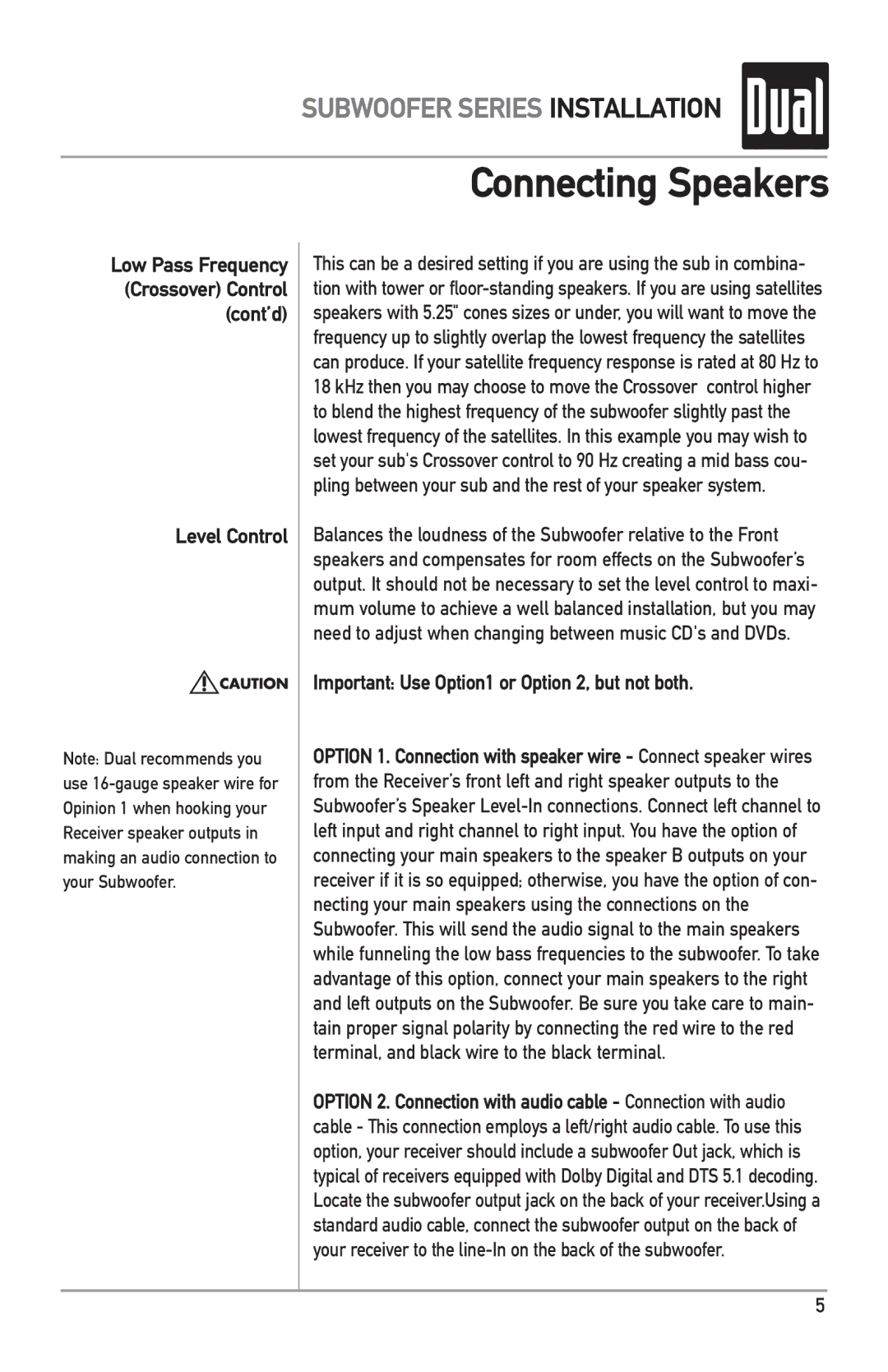
SUBWOOFER SERIES INSTALLATION
Connecting Speakers
Low Pass Frequency
(Crossover) Control
(cont’d)
Level Control
Note: Dual recommends you use
This can be a desired setting if you are using the sub in combina- tion with tower or
Balances the loudness of the Subwoofer relative to the Front speakers and compensates for room effects on the Subwoofer’s output. It should not be necessary to set the level control to maxi- mum volume to achieve a well balanced installation, but you may need to adjust when changing between music CD's and DVDs.
Important: Use Option1 or Option 2, but not both.
OPTION 1. Connection with speaker wire - Connect speaker wires from the Receiver’s front left and right speaker outputs to the Subwoofer’s Speaker
OPTION 2. Connection with audio cable - Connection with audio cable - This connection employs a left/right audio cable. To use this option, your receiver should include a subwoofer Out jack, which is typical of receivers equipped with Dolby Digital and DTS 5.1 decoding. Locate the subwoofer output jack on the back of your receiver.Using a standard audio cable, connect the subwoofer output on the back of your receiver to the
5
